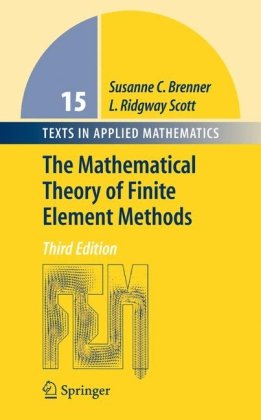

Most ebook files are in PDF format, so you can easily read them using various software such as Foxit Reader or directly on the Google Chrome browser.
Some ebook files are released by publishers in other formats such as .awz, .mobi, .epub, .fb2, etc. You may need to install specific software to read these formats on mobile/PC, such as Calibre.
Please read the tutorial at this link: https://ebookbell.com/faq
We offer FREE conversion to the popular formats you request; however, this may take some time. Therefore, right after payment, please email us, and we will try to provide the service as quickly as possible.
For some exceptional file formats or broken links (if any), please refrain from opening any disputes. Instead, email us first, and we will try to assist within a maximum of 6 hours.
EbookBell Team

4.0
16 reviewsThis book develops the basic mathematical theory of the finite element method, the most widely used technique for engineering design and analysis.
The third edition contains four new sections: the BDDC domain decomposition preconditioner, convergence analysis of an adaptive algorithm, interior penalty methods and Poincara\'e-Friedrichs inequalities for piecewise W^1_p functions. New exercises have also been added throughout.
The initial chapter provides an introducton to the entire subject, developed in the one-dimensional case. Four subsequent chapters develop the basic theory in the multidimensional case, and a fifth chapter presents basic applications of this theory. Subsequent chapters provide an introduction to:
- multigrid methods and domain decomposition methods
- mixed methods with applications to elasticity and fluid mechanics
- iterated penalty and augmented Lagrangian methods
- variational "crimes" including nonconforming and isoparametric methods, numerical integration and interior penalty methods
- error estimates in the maximum norm with applications to nonlinear problems
- error estimators, adaptive meshes and convergence analysis of an adaptive algorithm
- Banach-space operator-interpolation techniques
The book has proved useful to mathematicians as well as engineers and physical scientists. It can be used for a course that provides an introduction to basic functional analysis, approximation theory and numerical analysis, while building upon and applying basic techniques of real variable theory. It can also be used for courses that emphasize physical applications or algorithmic efficiency.
Reviews of earlier editions: "This book represents an important contribution to the mathematical literature of finite elements. It is both a well-done text and a good reference." (Mathematical Reviews, 1995)
"This is an excellent, though demanding, introduction to key mathematical topics in the finite element method, and at the same time a valuable reference and source for workers in the area."
(Zentralblatt, 2002)